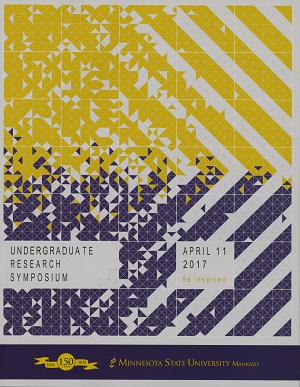Self-Rating Abilities of Communicatin of People with Aphasia
Location
CSU Ballroom
Start Date
10-4-2017 2:00 PM
End Date
10-4-2017 3:30 PM
Student's Major
Speech, Hearing, and Rehabilitation Services
Student's College
Allied Health and Nursing
Mentor's Name
H. Sheen Chiou
Mentor's Department
Speech, Hearing, and Rehabilitation Services
Mentor's College
Allied Health and Nursing
Description
Many people with aphasia (PWA) want therapy to be relevant to their unique needs and desires and focused on skills they can apply to their everyday lives (Tomkins, Siyambalapitiya & Worrall, 2013; Worrall, et al., 2011). It is important for speech-language pathologists (SLPs) to give value to what PWA describe as meaningful life change and integrate it into therapy (Kagan, et al., 2008). Using self-reported outcome measures can help SLPs see how PWA feel about their communication abilities to see if their therapy has met their needs. In order to work toward common goals, it's essential to understand how PWA and SLPs rate the communication of PWA. This study investigated how PWA rate their communication abilities based on reports from PWA themselves and their SLPs by assessing them using the Western Aphasia Battery (WAB), a language impairment measure, and the Assessment for Living with Aphasia (ALA), an aphasia-friendly patient-reported measure. Twenty-three subjects, ages 37 to 83, with severity of aphasia ranging from mild to very severe participated in this study. Our results indicated that PWA and SLPs understand PWAs' communication differently. The way PWA viewed their receptive language according to the ALA did not correlate to the way SLPs viewed their receptive language according to the WAB. Additionally, the way PWA viewed their speech and writing according to the ALA also did not correlate to the way SLPs viewed their speech and writing according to the WAB. Thus, SLPs should consider incorporating patient-reported measures into assessment in order to better meet PWAs' needs in therapy.
Self-Rating Abilities of Communicatin of People with Aphasia
CSU Ballroom
Many people with aphasia (PWA) want therapy to be relevant to their unique needs and desires and focused on skills they can apply to their everyday lives (Tomkins, Siyambalapitiya & Worrall, 2013; Worrall, et al., 2011). It is important for speech-language pathologists (SLPs) to give value to what PWA describe as meaningful life change and integrate it into therapy (Kagan, et al., 2008). Using self-reported outcome measures can help SLPs see how PWA feel about their communication abilities to see if their therapy has met their needs. In order to work toward common goals, it's essential to understand how PWA and SLPs rate the communication of PWA. This study investigated how PWA rate their communication abilities based on reports from PWA themselves and their SLPs by assessing them using the Western Aphasia Battery (WAB), a language impairment measure, and the Assessment for Living with Aphasia (ALA), an aphasia-friendly patient-reported measure. Twenty-three subjects, ages 37 to 83, with severity of aphasia ranging from mild to very severe participated in this study. Our results indicated that PWA and SLPs understand PWAs' communication differently. The way PWA viewed their receptive language according to the ALA did not correlate to the way SLPs viewed their receptive language according to the WAB. Additionally, the way PWA viewed their speech and writing according to the ALA also did not correlate to the way SLPs viewed their speech and writing according to the WAB. Thus, SLPs should consider incorporating patient-reported measures into assessment in order to better meet PWAs' needs in therapy.
Recommended Citation
Haler, Anna and Rachel Wilson. "Self-Rating Abilities of Communicatin of People with Aphasia." Undergraduate Research Symposium, Mankato, MN, April 10, 2017.
https://cornerstone.lib.mnsu.edu/urs/2017/poster-session-B/4



